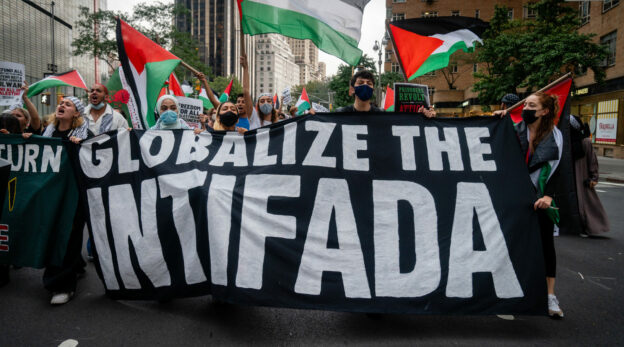A Pesach-themed piece I wrote for the Boston Globe can be read here.


A Pesach-themed piece I wrote for the Boston Globe can be read here.

An opinion column I wrote for the Boston Globe appeared on March 21 and can be read here.

Last Thursday, explosives destroyed three buses in Israel – empty ones. Yesterday, Nael Obeid, a notorious Hamas terrorist who was freed in a hostage exchange, fell to his death in East Jerusalem. As we prepare to welcome Adar, we pray for Hashem’s continued protection.

I’ve long fixated on a phrase Yisro uses. When he rejoins Moshe and joins Klal Yisrael, he declares why, although he had been a guru in countless cults, he came to the conclusion that “Hashem is greater than all the powers.”
“Because,” he explains, “of the thing that [the Mitzriyim] plotted against them [i.e. Klal Yisrael]” (Shemos 18:11).
Rashi, in explanation, cites the Mechilta: “… the Mitzriyim thought to destroy Yisrael by water and they were themselves destroyed by water.” And he quotes Rabi Elazar (Sotah 11a), punning on the word “plotted,” which can also mean “cooked,” that “in the pot that they cooked up they ended up being cooked.”
What strikes me is that it is irony – here, that the means the Mitzriyim employed to kill Jews ended up as the agent of their own downfall – that moves Yisro to perceive the Divine hand.
It is such a Purim thought. In Megillas Esther, too, although Hashem’s name is entirely absent, His hand is perceptible through the irony that saturates the story: Haman turns up at just the wrong place at just the wrong time, and ends up being tasked with arranging honors for his nemesis Mordechai. All the villain’s careful planning ends up upended, and he is hanged on the very gallows he prepared for Mordechai. Haman’s riches, according to the Book of Esther, were given to Mordechai. V’nahafoch hu, “and it was turned upside down.”
Amalek may fight with iron, but he is defeated with irony.
Shortly after Germany’s final defeat in WWII, an American army major, Henry Plitt accosted a short, bearded artist painting on an easel in an Austrian town and asked him his name. “Joseph Sailer,” came the reply.
Plitt later recounted: “I don’t know why I said [it, but] I said, ‘And what about Julius Streicher?’” – referring to the most vile and antisemitic of Nazi propagandists.
“Ya, der bin ich,” the man responded. “Yes, that is me.” And it was.
A reporter later told Major Plitt that, had only “a guy named Cohen or Goldberg or Levy… captured this arch-anti-Semite, what a great story it would be.”
Major Plitt, in fact, was Jewish.
Stars and Stripes in late 1945 reported that Streicher’s possessions were converted to cash and used to create an agricultural training school for Jews intending to settle in Eretz Yisrael.
And when Streicher was hanged at Nuremberg in 1946, his final words, shouted just before the trap sprang open, were: “Purim Fest 1946!” – a rather odd thing to say on an October morning.
© 2025 Rabbi Avi Shafran

In order to return hostages to their families, Israel has had to release hundreds of prisoners, some of them convicted murderers.
There’s a way, though, to prevent future such releases. You can read about it here.

For once, something positive about Israel has been served up by The New York Times, albeit unintentionally. What’s more, Al Jazeera spoke the truth.
Moshiach’s arrival seems imminent.
To read about those media’s accomplishments, please click here.

Much of the “pro-Palestinian” (read: anti-Israel—and, more often than not, anti-Jew) activism has been angry, crass, disruptive and destructive.
And, at least in one recent case, counterproductive.
To read about it, click here.

The Catholic Church as an institution has come a long way with regard to its attitude toward the Jewish people. But, apparently, it still has, as they say, a ways to go.
You can read what I mean here:

“Why display yourselves when you are satiated, before the children of Esav and Yishmael?” (Rashi, Beraishis 42:1).
That is the Gemara’s (Taanis 10b) understanding of Yaakov Avinu’s exhortation to his sons, lama tisra’u (understood, apparently, as “why be conspicuous?”). His rhetorical question was posed to ensure that “they will [the children of Esav and Yishmael] will not be jealous of you….” as they journey to Mitzrayim to garner food during the famine.
Chazal say that, in general, “a person should not indulge in luxury” [ibid]. But especially when it might generate jealousy and resultant animosity.
It is a lesson for the ages, and needed throughout the ages. Among others, the Kli Yakar, who died in 1619, lamented the fact that some Jews’ homes and possessions in his time proclaimed their material success. The problem has hardly disappeared today.
(One of the things that attracted me to the community where I live was the basic uniformity of the homes there. There are no mansions here, not even McMansions.)
Several commentaries wonder at the Gemara’s reference, in the opening quote above, to the progeny of Esav and Yishmael. Yaakov was in Cna’an. Wouldn’t it have made more sense for Chazal to make their point about not standing out with regard to Yaakov’s neighbors, the Cna’anim? There’s no reason to believe that Esav and Yishmael’s people were nearby.
What occurs to me is that there is a poignant prescience in Chazal’s comment. They may have sensed, or even foreseen, a distant but long-running future of Klal Yisrael, where so many of its members would be residing, as has been the case for many centuries, amid cultures associated with Esav and Yishmael.
© 2024 Rabbi Avi Shafran

On a recent Friday night, the Council on American-Islamic Relations (CAIR) held its “30th anniversary gala” in Washington, DC. Too bad you probably missed it.
Something the celebrants didn’t know was that some bad news (at least for them) lay on the horizon. To read what it was, please click here.